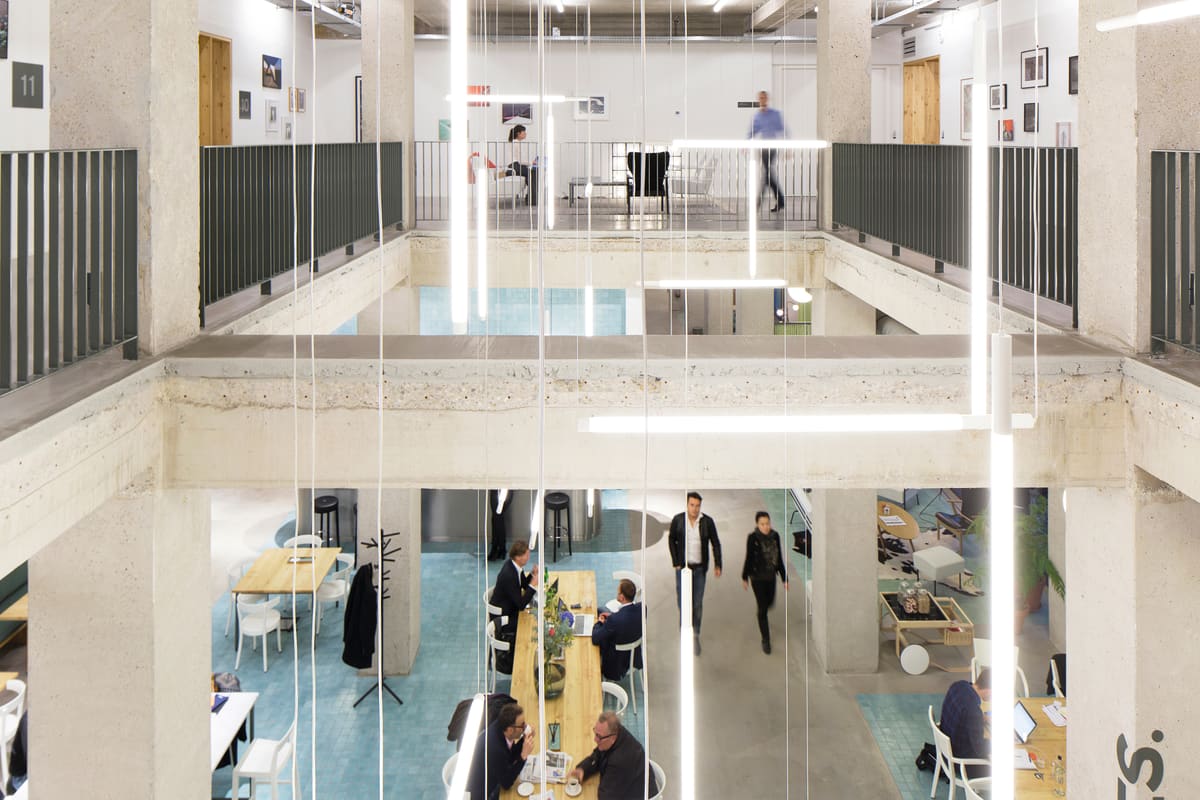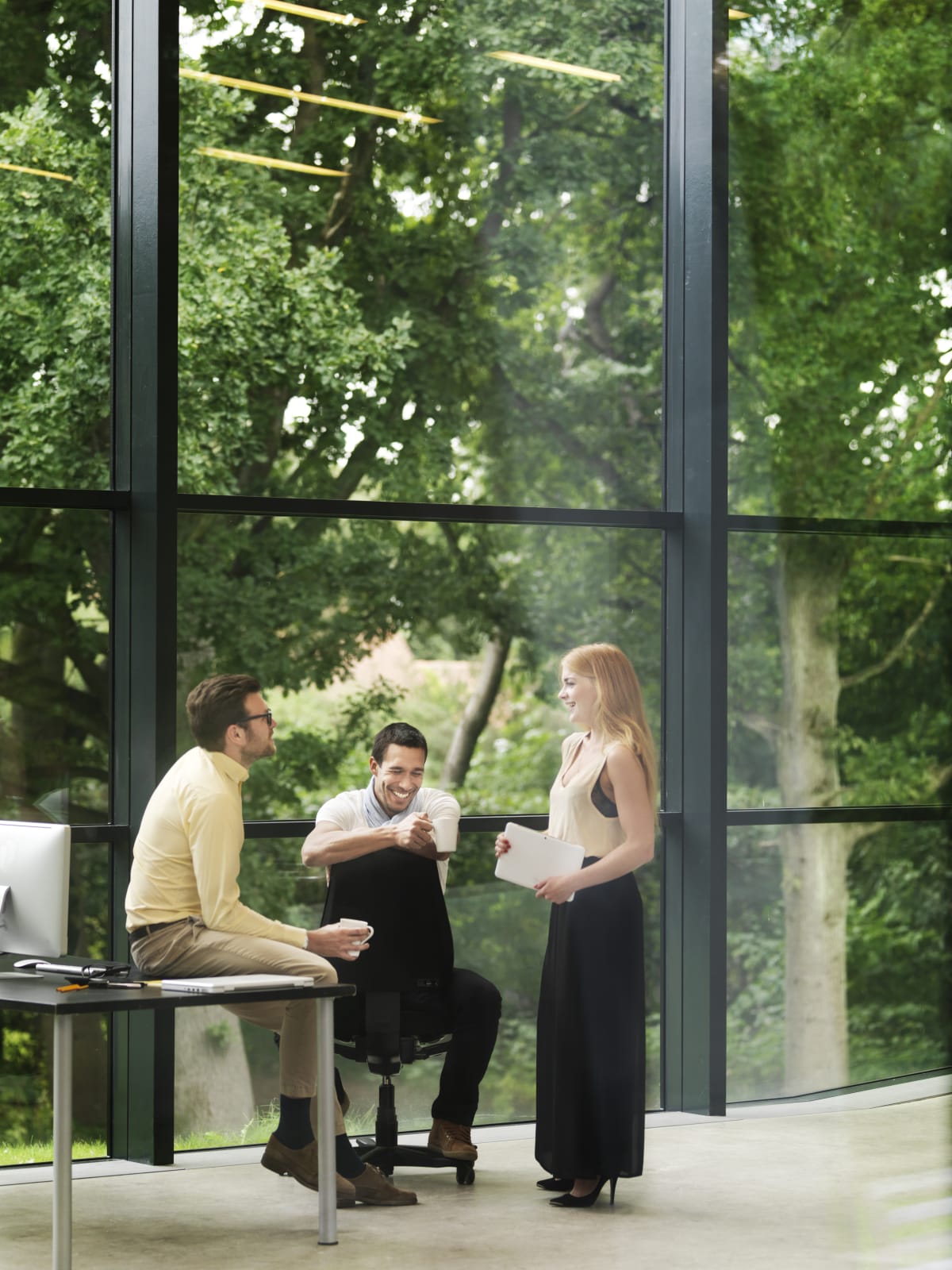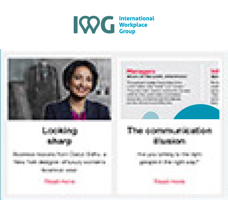Office spaces need to be redesigned to reflect the changing world of work.
Cubicle farms are out. In the hybrid working world, the office will play a key role in allowing employees to come together for collaboration and collective creativity. And this means that the design of offices will evolve to enhance relationship building and face-to-face communication, with employees using these new facilities in ways that best fit their lifestyles and working needs.
Many experts believe that offices will morph into social hubs, suggesting we could see the integration of bars, wellness spaces, expansive communal tables and residential-style lounges. Workspace providers will also deliver a wide range of new features, from biophilic design and seamless video-conferencing suites to convivial social spaces and al fresco forums for team gatherings.
“This is a chance for companies to fine-tune their real estate footprint to be more appropriate to the way employees are looking to work,” says Doug Demers, Managing Principal at B+H Architects and the Centre for Advanced Strategy. “The New York Times ran an article recently saying that employers had better figure out how to make some magic happen in the office space if they wanted people to come back and feel empowered and creative, and it’s true. People will be thinking, ‘Am I going to be able to be creative in this space?’”
Fun will have an increasing part to play in the office experience as an aid to wellbeing and creativity – something the tech giants have long understood. Google is famous for its fun-based workspaces, featuring Lego zones, slides, bowling alleys and more. “Amazon talks about ‘Easter eggs’,” says Demers. “These are the unexpected things that happen as you move through a space that may inspire you or even disturb you, but essentially make things more interesting and help you to break out of a fixed way of thinking.”
The rise of the experience manager
Although hybrid workers will only be going into an office or coworking space part-time, when they do, the aim is for them to have a highly motivating experience. And that means there’s increasingly a role for someone to define and direct that experience. Companies such as Netflix and Jaguar Land Rover are leading the way, employing workplace experience managers to ensure that their offices are places where staff are happy to spend time, and helping to build a positive culture. As well as the design of the office, this also includes assisting with events programmes and extra-curricular activities for teambuilding, ensuring a sense of togetherness and inclusion amongst employees.
“In many ways, a workplace experience manager is a hybrid role between an HR manager and a facilities manager,” says Chad Smith, Vice President of Product Strategy at workplace and facility management software company iOffice. “They are responsible for the overall employee experience and the elements that influence it, including the physical workplace, technology and policies that shape the company culture.”
The rise of experience design is one of ten trends identified in IWG’s white paper, The Future of Work: a trends forecast for 2022. You can download it here.






